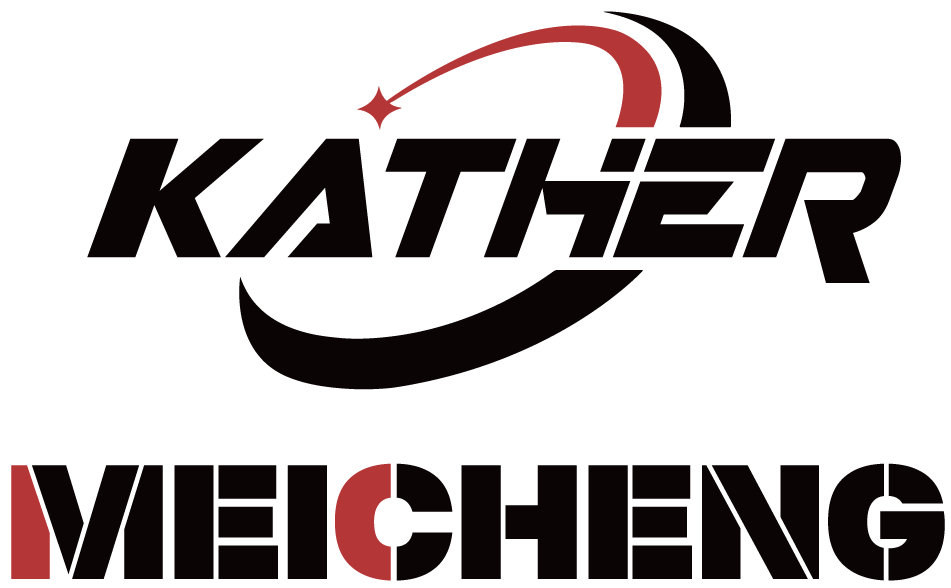چگونه قطعات مینی تلر فرسوده را قبل از شکستن در نیمه فصل شناسایی کنیم
باغبانان و کشاورزان کوچک به تجهیزات خود برای آماده سازی خاک، مدیریت علف ها و حفظ بهره وری در طول فصل رشد وابسته هستند. یکی از ضروری ترین ابزارها در این دسته، مینی تلر است که به دلیل توانایی کار در فضاهای تنگ و هوا کردن موثر خاک ارزش دارد. با این حال، مانند تمام ابزار مکانیکی، یک کشانده در معرض فرسایش است. بدترین زمان برای خرابی در اواسط فصل است که کار های کاشت و پرورش در اوج خود هستند. شناسایی قطعات فرسوده قبل از اینکه خراب شوند می تواند زمان صرفه جویی، هزینه تعمیرات را کاهش دهد و از تاخیر در انجام کارهای حیاتی جلوگیری کند.
این راهنما نشانه های فرسایش را در زمینه های مختلف بررسی می کند. کشانده اجزای، چگونگی تشخیص زود هنگام مشکلات و چرا بازرسی منظم می تواند طول عمر ماشین را افزایش دهد. با یادگیری تشخیص مشکلات احتمالی قبل از اینکه آنها تشدید شوند، می توانید اطمینان حاصل کنید که ماشین شما در طول فصل قابل اعتماد باقی می ماند.
چرا نگهداری پیشگیرانه برای یک تلر مهم است؟
یک چرخ دار فقط یک مجموعه از تیغه های چرخان نیست؛ آن یک ماشین پیچیده است که از قطعات متعدد متصل به هم تشکیل شده است. عملکرد هر بخش مستقیما بر کل سیستم تاثیر می گذارد. وقتی یک جزء از بدن شروع به فرسایش می کند، بر بقیه فشار می آورد و تخریب کلی را تسریع می کند.
نگهداری پیشگیرانه به باغبانان و پیمانکاران اجازه می دهد تا مشکلات کوچک را قبل از اینکه به شکست های بزرگ تبدیل شوند، شناسایی کنند. برای مثال، ممکن است یک لوله ی سفت و بی صدا به نظر فوری نیاید، اما با گذشت زمان باعث می شود موتور بیشتر کار کند، که منجر به مصرف بیشتر سوخت و گرم شدن بیش از حد می شود. همچنین، ممکن است کمربند گشاده هنوز تیغه ها را می چرخاند، اما در اثر بار، می تواند لغزود و در نهایت شکسته شود و کار را متوقف کند. تشخیص این علائم هشدار دهنده زودهنگام به حفظ جریان کار ثابت کمک می کند و از زمان توقف پر هزینه جلوگیری می کند.
تاین ها: کارگران خط مقدم در تلر
لوله ها قابل مشاهده ترین و استفاده ترین قسمت لوله هستند. کار آنها این است که خاک را حفاری کنند، تکه تکه را بشکنند و بستر را برای کاشت آماده کنند. چون به طور مداوم در تماس با خاک، سنگ و ریشه هستند، سریعتر از سایر اجزای بدن از بین می روند.
یک تیکه ی فرسوده اغلب به جای نوک تیز، لبه های گرد نشان می دهد. این کار باعث می شود که کارایی برش آن کاهش یابد و باعث می شود که این دستگاه برای نفوذ به خاک فشرده تلاش کند. نشانه دیگری از فرسایش، بافت نامناسب خاک پس از کشت است، جایی که توده ها علیرغم عبور مکرر، شکسته نمی شوند. اگر متوجه شوید که در هنگام کار، چرخ چرخ بیش از حد معمول لرزه می کند، ممکن است نشان دهنده خم شدن یا عدم تعادل لبه ها باشد.
درختان را به طور منظم بررسی کنید، به خصوص قبل از فصل اوج کاشت. وقتی تیز بودنشون رو از دست دادن یا نشانه های ترک شدنشون رو نشون دادن عوضشون کنین کار با قیر های فرسوده نه تنها کیفیت آماده سازی خاک را کاهش می دهد بلکه موتور را نیز تحت فشار قرار می دهد و به طور بالقوه منجر به آسیب گسترده تر می شود.
کمربند راننده: ساکت اما ضروری
کمربند محرک قدرت موتور را به لوله ها منتقل می کند. از آنجا که در معرض تنش و اصطکاک کار می کند، یکی از شایع ترین نقاط شکست در یک چرخ دار است.
علائم هشدار دهنده ی استفاده از کمربند رانش عبارتند از لغزش در هنگام کار، کاهش سرعت در حالی که موتور در حال اجراست و صدای جیغ زدن. کمربندی که ظاهراً فرسوده، ترک خورده یا شیشه شده به نظر می رسد، نزدیک به شکست است. این علائم اغلب به تدریج ظاهر می شوند، بنابراین بازرسی مداوم بسیار مهم است.
تعویض کمربند نسبتاً ارزان است در مقایسه با زمان توقف ناشی از شکستن غیر منتظره. بررسی وضعیت کمربند هر چند هفته در طول استفاده فعال تضمین می کند که می توانید قبل از اینکه فصل مختل شود، برنامه ریزی برای تعویض کنید.

موتور: قلب ماشین
موتور هر عملکردی را در چرخ چرخ انجام می دهد و وضعیت آن تعیین می کند که آیا ماشین به طور قابل اعتماد شروع می شود و چرخش کافی را تولید می کند. در حالی که موتورها دوام دارند، بی توجهی می تواند منجر به خرابی زودرس شود.
نشانه های اولیه مشکلات موتور شامل مشکل شروع، عدم ثبات در حالت بی حرکت و دود غیرمعمول از خروجی است. دود سفید ممکن است نشان دهنده مشکلات خنک کننده یا سوخت باشد، در حالی که دود سیاه اغلب نشان دهنده احتراق ناقص است. صداهای عجیب و غریب در هنگام کار یک پرچم قرمز است که ممکن است اجزای داخلی مانند لاجری یا شیرها شکست بخورند.
چک کردن روغن به طور معمول ضروری است. روغن کثیف باعث فرسایش سریع قطعات موتور می شود، در حالی که سطح پایین روغن می تواند باعث خرابی فاجعه بار شود. با بررسی وضعیت روغن و تعویض آن مطابق با برنامه تولید کننده، می توانید از بسیاری از مشکلات موتور جلوگیری کنید. فیلترهای هوا نیز نیاز به تمیز کردن یا تعویض منظم دارند تا از ورود گرد و غبار به اتاق احتراق جلوگیری شود.
انتقال: انتقال قدرت در شرایط استرس
انتقال قدرت موتور را به چرخ ها و در برخی از مدل ها نیز به چرخ ها هدایت می کند. چون تورک و سرعت را کنترل می کند، تحت فشار قابل توجهی قرار دارد.
علائم سایش گیرنده شامل صداهای خرد، مشکل در تغییر سرعت یا تاخیر در اتصال بعد از اتصال کلاچ است. اگه متوجه نشت روغن در اطراف محفظه گیرنده بشید، این نشان میده که مهر و موم ها شکست خورده اند. کار با سطح روغن انتقال کم باعث فرسایش سریع تر می شود و می تواند منجر به خرابی ناگهانی در طول کارهای سنگین شود.
بررسی روغن گیربکس، محکم کردن بندها و اطمینان از سالم بودن مهر و موم ها اقدامات پیشگیرانه ضروری هستند. تعویض زود هنگام دنده ها و یا اسباب کشی های فرسوده از تعمیرات گران قیمت تر در آینده جلوگیری می کند.
کنترل کلاچ و ترول
یک کوبنده و گاز دار کارکن کنترل دقیق بر تحویل قدرت را می دهد. وقتی این کنترل ها شروع به تخریب می کنند، کنترل ماشین سخت تر می شود.
یک کلاچ فرسوده ممکن است لغزید، به این معنی که تایین ها یا چرخ ها آهسته یا به درستی از بین نمی روند. کابل گاز ممکن است کشش یا فرسایش داشته باشد و حفظ سرعت ثابت را دشوار کند. علائم اولیه شامل کاهش واکنش، چسبیدن اهرم ها یا احساس سفت شدن کابل ها می باشد.
بررسی کابل ها برای فرسایش و اطمینان از حرکت راحت کنترل ها کمک می کند تا ایمنی و راحتی در هنگام استفاده حفظ شود. نادیده گرفتن این اجزای می تواند منجر به افزایش ناگهانی یا از دست دادن کنترل شود، که هر دو در طول کار خطرناک هستند.
سیستم سوخت
سیستم سوخت یک چرخ دار شامل مخزن، خطوط سوخت، کربوریتور و فیلترها است. چون با سوخت مایع سروکار داره، آلودگی و گلوگیری خطراتی رایج هستن.
اگر در هنگام شتاب دادن، چرخ چرخ تردد کند، به طور غیر منتظره ای متوقف شود یا بوی سوخت را منتشر کند، ممکن است نشان دهنده مشکلات سیستم سوخت باشد. خطوط سوخت ترک خورده یا فیلترهای مسدود جریان را محدود می کنند، در حالی که سپرده های کربوریتور کارایی موتور را کاهش می دهد. بررسی شکاف لوله ها و اطمینان از تمیز بودن فیلترها مانع از توقف ناگهانی در طول کار حیاتی می شود.
چرخ ها و راننده ها
برای مدل های مجهز به چرخ، لاجری ها چرخش صاف و مانور پذیری را تضمین می کنند. در حالی که در این حالت، چرخ های چرخدار به شدت می چرخند و در هنگام فشار دادن به چرخ چرخدار، مقاومت بیشتری ایجاد می کنند. چرخ که در طول بازرسی به طور آزادانه چرخش نمی کند نشان می دهد که لوله های حمل نیاز به روان کردن یا تعویض دارند.
تعویض سریع لاجری ها از عدم تراز شدن که می تواند قاب یا انتقال را تحت فشار قرار دهد جلوگیری می کند. از آنجا که چرخ ها اغلب در محیط های خامه ای و مرطوب کار می کنند، بررسی چرخ و لوله باید مکرر باشد.
قاب و دستگیره
در حالی که قطعات حرکت نمی کنند، قاب و دستگیره های یک چرخ دار لرزش و ضربه را تحمل می کنند. با گذشت زمان، جوش ها ممکن است ضعیف شوند، پیچ ها گشوده شوند یا دستگیره ها ترک کنند. این مسائل بر ایمنی و راحتی اپراتور تاثیر می گذارند.
بازرسی های بصری بیشتر این مشکلات را نشان می دهد. اگر دستگیره ها احساس می کنند که گشوده اند، تکان می خورند یا زنگ در اطراف مفاصل ظاهر می شوند، قبل از استفاده بیشتر آنها را تقویت کنید. قاب آسیب دیده نه تنها کارایی را کاهش می دهد بلکه خطر آسیب دیدگی اپراتور را نیز افزایش می دهد.
چرا خرابی های نیمه فصل بسیار گران است
وقتی که یک ماشین در وسط فصل خراب شود، عواقب آن فراتر از هزینه تعمیرات است. تاخیر در آماده سازی خاک می تواند برنامه های کاشت را مختل کند، پنجره های رشد را کوتاه کند و حاصل را کاهش دهد. برای تولیدکنندگان تجاری، این به طور مستقیم به زیان مالی تبدیل می شود. برای باغبانان خانگی، این می تواند به معنای هدر دادن تلاش و کاهش حاصل باشد.
شکستگی ها همچنین بر برنامه ریزی جریان کار تاثیر می گذارد. کارگران که برای انجام کارهای روزانه به تجهیزات وابسته هستند ممکن است خود را بیکار و منتظر قطعات یا تعمیرات ببینند. این زمان توقف اغلب گران تر از تعمیرات پیشگیرانه است.
ایجاد یک برنامه نگهداری پیشگیرانه
کلید اجتناب از شکست در نیمه فصل ثابت بودن است. برنامه ای را برای استفاده فعال ایجاد کنید که شامل بازرسی روزانه، هفتگی و ماهانه در طول استفاده فعال باشد. چک روزانه باید شامل سطح روغن، سوخت و بازرسی سریع بینایی کمربند و شلوار باشد. بازرسی های هفتگی باید بر فیلترهای هوا، کنترل ها و فست ها متمرکز باشد. بررسی های ماهانه باید شامل بررسی های عمیق تر انتقال، لاجری و یکپارچگی قاب باشد.
نگه داشتن یک دفتر نگهداری به ردیابی الگوها و شناسایی مشکلات تکراری کمک می کند. تعویض قطعات در فواصل زمانی برنامه ریزی شده، به جای انتظار برای شکست، اطمینان از قابلیت اطمینان را تضمین می کند.
زمان جایگزینی بجای تعمیر
گاهی اوقات، تعمیر یک قطعه ی فرسوده، مقرون به صرفه نیست. برای مثال، تیز کردن یک قفل بارها و بارها ممکن است عمر آن را تا حدی افزایش دهد تا فلز خسته شود و لازم باشد جایگزین شود. همچنین، پیچ زدن کمربند خرابه تنها یک راه حل موقتی است. دانستن زمان تعویض به جای تعمیر، بخشی از مدیریت موثر تجهیزات است.
نگاه به آینده: آینده تعمیر و نگهداری ماشین آلات کوچک
با پیشرفت تکنولوژی، ممکن است در آینده دستگاه های چرخ دار مجهز به سنسور هایی باشند که به طور خودکار به کارفرمایان در مورد قطعات فرسوده هشدار می دهند. سیستم های هوشمند نظارت می توانند تنش کمربند، وضعیت موتور یا ناهنجاری های ارتعاش را تشخیص دهند و هشدارها را به یک برنامه تلفن همراه ارسال کنند. تا آن زمان، بازرسی دستی بهترین ابزار باغبان برای شناسایی زودهنگام مشکلات است.
نتیجهگیری
یک ماشین کوچک در باغ یا مزرعه کوچک یک متحد ارزشمند است، اما همچنین یک ماشین است که نیاز به مراقبت دارد. شناسایی قطعات فرسوده قبل از اینکه در نیمه فصل خراب شوند برای حفظ بهره وری ضروری است. از لوله و کمربند تا موتور و گیرنده، هر جزءي نقشي در عملکرد داره. با توجه به علائم هشدار دهنده اولیه مانند صداهای عجیب، کاهش بهره وری یا سایش قابل مشاهده، اپراتورها می توانند از خرابی های گران قیمت جلوگیری کنند.
یک دستگاه زراعی که به خوبی نگهداری می شود، خدمات قابل اطمینان را ارائه می دهد، زمان توقف را کاهش می دهد و اطمینان حاصل می کند که آماده سازی خاک و کاشت به موقع انجام می شود. در باغباني و کشاورزی، زمانبندي مهم است. با اولویت بندی بازرسی و نگهداری پیشگیرانه، نه تنها از ماشین خود بلکه از محصول خود نیز محافظت می کنید.
سوالات متداول
در طول فصل چقدر باید چرخ چرخ را بررسی کنم؟
بهتر است که هر روز به سرعت چک کنید، هر هفته چک کنید و هر ماه در طول استفاده فعال چک کنید.
معمولاً چه قسمتي از چرخ چرخ شکست ميخوره؟
کمربند و نوار های محرک از رایج ترین نقاط خرابی ناشی از استفاده مداوم و اصطکاک هستند.
اگه هنوزم چرخيدن ميتونم از اون شيشه هاي بي رنگ استفاده کنم؟
در حالی که تکه های تیره هنوز می توانند چرخانند، نفوذ خاک را کاهش می دهند و موتور را تحت فشار قرار می دهند. بهتره که فوراً تیزشون کنین یا عوضشون کنین
چرا چرخ چرخ من دود سياهي پخش ميکنه؟
دود سیاه معمولا نشان دهنده احتراق ناقص است، اغلب به دلیل مشکلات سیستم سوخت یا فیلترهای هوای کثیف.
آیا قطعات بازاريابی قابل اعتماد برای تعمیر چرخ آهن هستند؟
قطعات پس فروش با کیفیت می توانند قابل اعتماد باشند، اما همیشه اطمینان حاصل کنید که با مدل چرخ دار خود سازگار هستند و از تامین کنندگان قابل اعتماد خریداری کنید.
فهرست مطالب
- چرا نگهداری پیشگیرانه برای یک تلر مهم است؟
- تاین ها: کارگران خط مقدم در تلر
- کمربند راننده: ساکت اما ضروری
- موتور: قلب ماشین
- انتقال: انتقال قدرت در شرایط استرس
- کنترل کلاچ و ترول
- سیستم سوخت
- چرخ ها و راننده ها
- قاب و دستگیره
- چرا خرابی های نیمه فصل بسیار گران است
- ایجاد یک برنامه نگهداری پیشگیرانه
- زمان جایگزینی بجای تعمیر
- نگاه به آینده: آینده تعمیر و نگهداری ماشین آلات کوچک
- نتیجهگیری
- سوالات متداول








